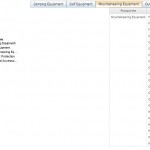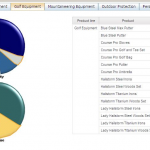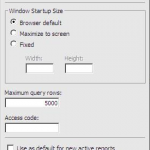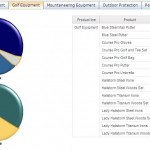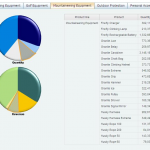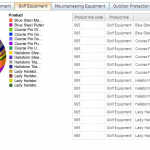5 Tips to Building Effective IBM Cognos Active Reports
Active Reports has been quite the buzz since its introduction. As more organizations move to Cognos 10 we have seen many seasoned report developers experiment with Active Reports. In an effort to shorten the learning curve I’m going to go over a few quick tips that I have found useful.
1. Active Reports Tip 1: Object Sizing
Placing data inside a block or table and hard-coding the sizes of the objects prevents content from ‘dancing’. If using similar properties across different objects, use classes to define formats and layouts to reduce file size.
Unspecified sizing
Objects nested and sized
2. Active Reports Tip 2: Reducing data retrieved
Active Reports should not be considered a direct replacement for standard Report Studio reports. Each has their own place in report consumption. More specifically, think hard before you decide to use Active Reports to retrieve large amounts of detail data. IBM Cognos Active Reports are designed so that all the data retrieved by report queries are included in the report file (.mht). Limiting the maximum number of rows returned by a query can help reduce the size of the output. The default value for this option is set to 5000. This is not a hard limit and can be reduced.
3. Active Reports Tip 3: Data Decks Vs Filtering
Data Decks are objects that are akin to conditional blocks within a standard report. In many cases it may be beneficial to considering using them instead of standard filtering. Filtering data can take more time depending on the amount of data being displayed. In some cases, creating a series of data deck cards with pre-set choices that users would want to see is quicker. In such cases, creating a series of data decks might make the file size larger, but it greatly improves performance over filtering.
4. Active Reports Tip 4: iPad specific authoring
If you are authoring reports to be consumed by mobile users on iPads you should be aware of their native resolution. Reports should be sized to 1024px by 704px with the Page Body padding set to 0. This will minimize scrolling and truncation.
5. Active Reports Tip 5: Reducing Chart Overhead
In an active report, charts are not dynamically generated. Chart views are rendered at runtime and stored within the MHT bundle. Chart heavy active reports could yield large output files. Keeping the charts to a minimum can help reduce the file size and improve performance of an Active report.
While there are many other tips that could be discussed, the ones listed above should provide a good foundation for some of your future development work. Should you have a need for Active Report development or would like to see a particular topic discussed feel free to contact us.


